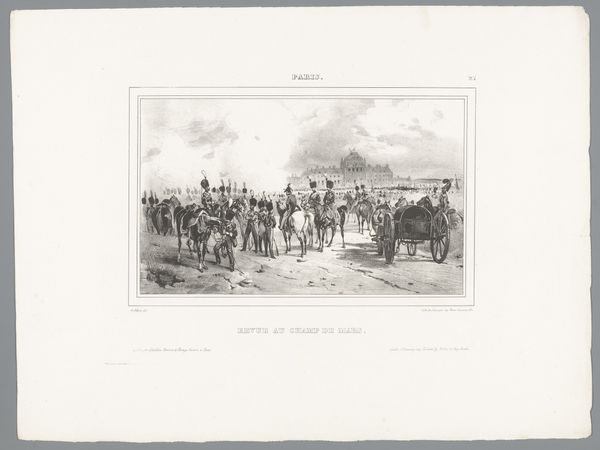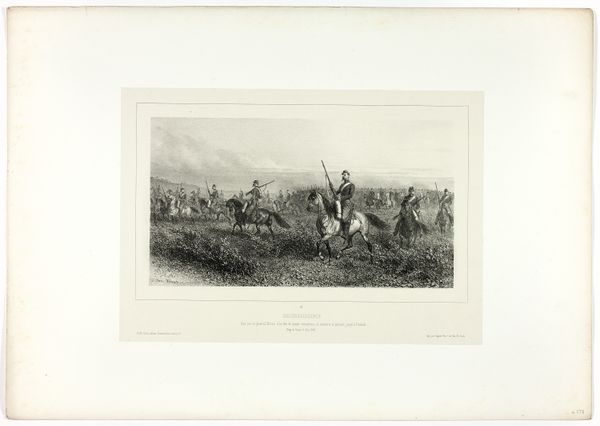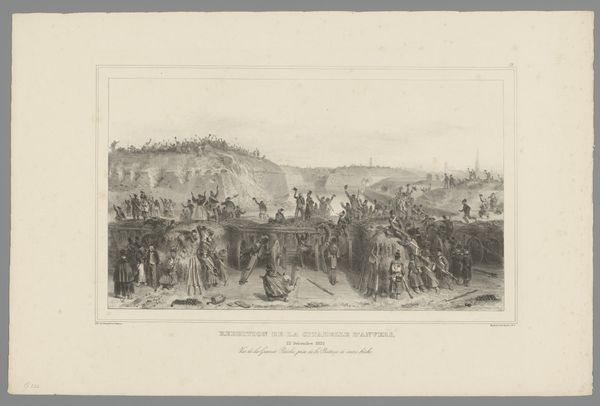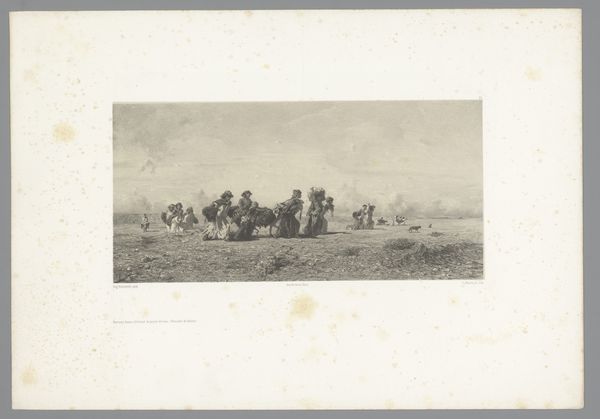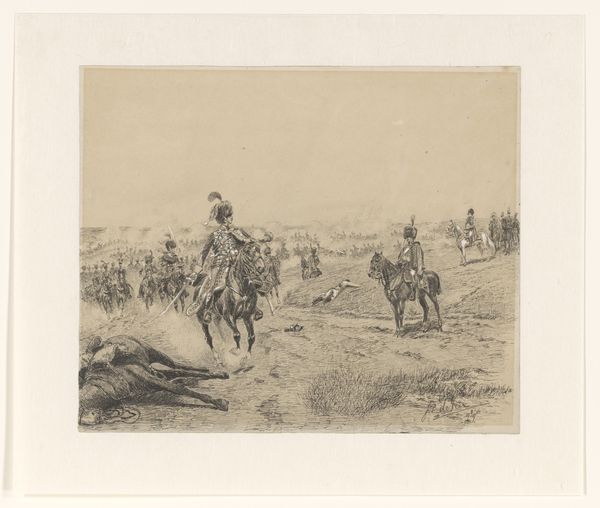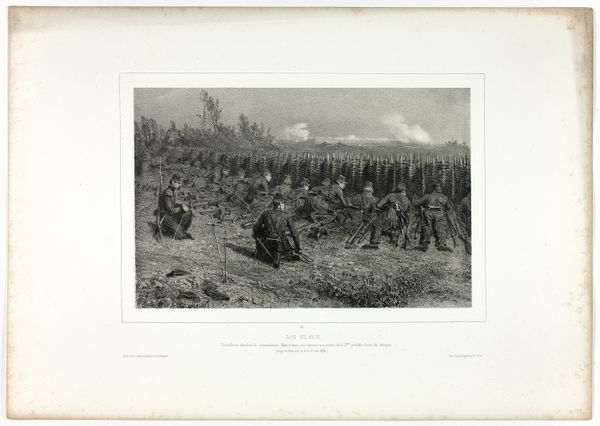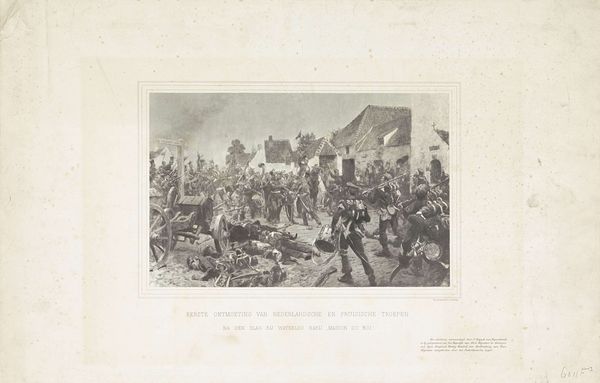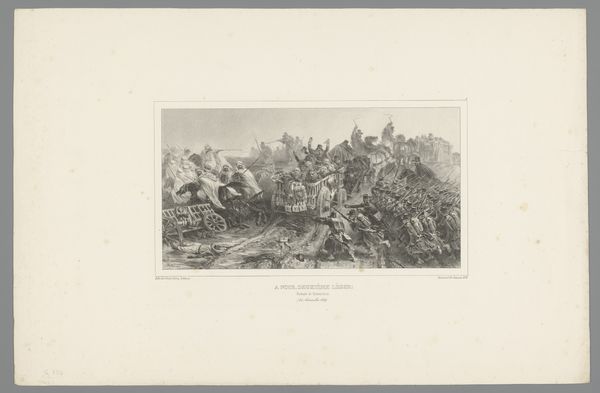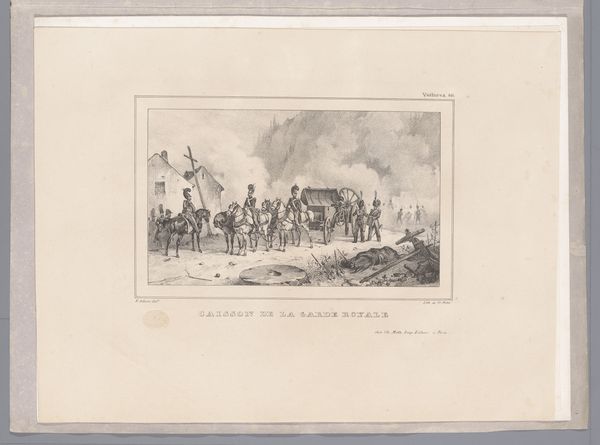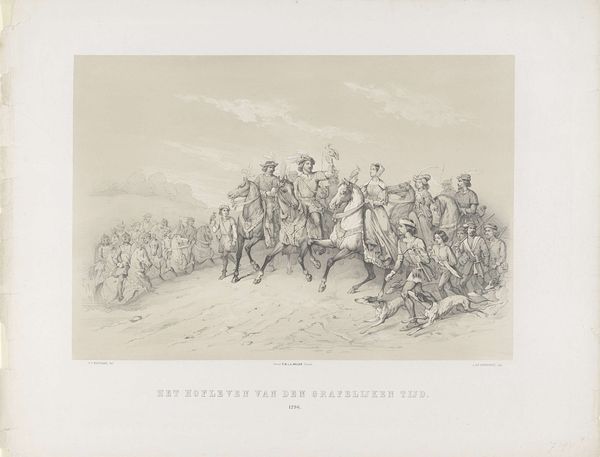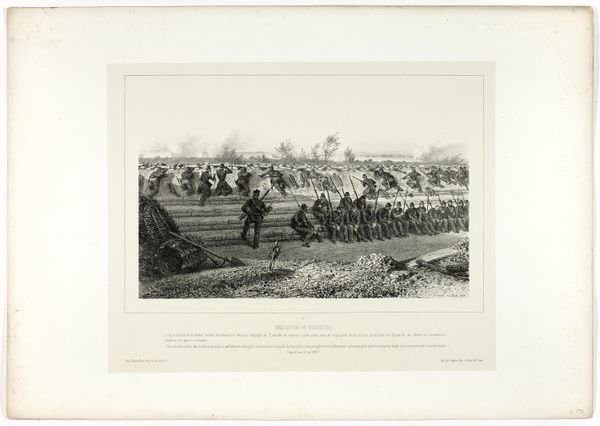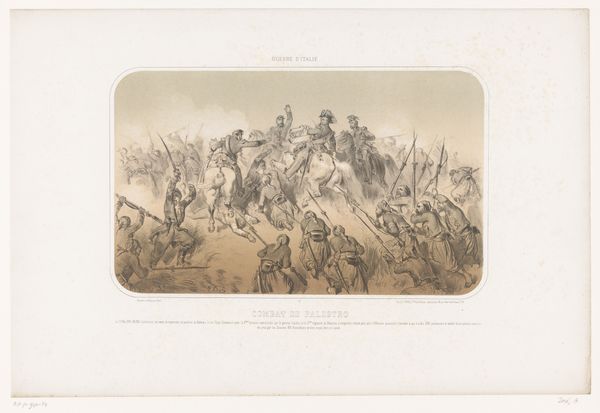
The French Army Arrives at Maglianella, from Souvenirs d’Italie: Expédition de Rome 1850
0:00
0:00
drawing, lithograph, print, etching, paper
#
drawing
#
lithograph
# print
#
etching
#
paper
#
romanticism
#
history-painting
Dimensions: 106 × 327 mm (image, incl. tint); 155 × 328 mm (primary support); 399 × 568 mm (secondary support)
Copyright: Public Domain
Curator: Editor: Okay, so this is "The French Army Arrives at Maglianella, from Souvenirs d’Italie: Expédition de Rome," created around 1850 by Auguste Raffet. It's a print, a combination of lithograph and etching, all on paper. It feels...dense. A lot of work went into rendering all those figures. What strikes you most about it? Curator: The lithographic process itself. Think of the labor involved in creating the matrix, likely limestone. The precise registration required to combine it with etching. And for what purpose? To mass produce a record of French military action in Italy. How does this speak to power structures? Editor: I see what you mean. It's not just about depicting a historical event; it’s about controlling how that event is perceived and disseminated. The material act of making so many prints underscores the intent to shape public opinion. What were these prints used for at the time? Curator: Precisely! And consider the distribution networks. Prints like these weren’t luxury objects for the elite; they were relatively accessible, circulating amongst a broader audience. It is about visualizing power for the masses and using production to drive that narrative. Editor: That makes me think about the intended audience and how the artist wanted people to interpret the French army’s presence. It is fascinating that a single image could travel to so many different locations in the world due to the materiality. How do we see similar tactics utilized in contemporary political strategies? Curator: Exactly. We are seeing similar themes utilized in contemporary political campaigns through the media. Editor: Looking at it through the lens of production and distribution really changes how I understand the image itself. Thanks. Curator: Indeed. Focusing on the materials and methods allows us to dissect not just the *what* but the *how* and *why* of image-making and political intent.
Comments
No comments
Be the first to comment and join the conversation on the ultimate creative platform.
